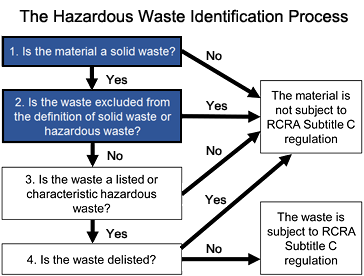7 Easy Facts About Reclaim Waste Explained
7 Easy Facts About Reclaim Waste Explained
Blog Article
Facts About Reclaim Waste Uncovered
Table of ContentsThe smart Trick of Reclaim Waste That Nobody is Talking AboutReclaim Waste Things To Know Before You BuyThe Reclaim Waste DiariesThe 6-Minute Rule for Reclaim WasteOur Reclaim Waste Statements
Domestic sewage waste refers to the waste and items from a property septic container. The correct monitoring and disposal of domestic sewer waste need liquid waste to be moved to a sewage treatment plant where the correct techniques and equipment are applied to detoxify and dispose of waste.
Industrial waste commonly includes possible hazards, such as flammable materials or a combination of liquid and strong waste items, and calls for a more innovative and in-depth disposal procedure. The disposal of commercial waste usually includes the purification of waste prior to transport to ensure risk-free and appropriate disposal. Industrial waste is produced from byproducts and runoff of commercial procedures and manufacturing.
This type of waste can not utilize the very same sewage management transportation or procedures as septic or commercial fluids. The commercial waste administration process needs the evaluation and screening of fluid waste prior to it goes through the disposal procedure (industrial wastewater treatment). Drainage waste is the liquid waste that originates from overflow and excess stormwater in extremely inhabited locations or cities
Drainage waste can create contamination and flooding if not dealt with properly. Making certain correct waste management can protect against disasters and reduce ecological harm.
Examine This Report on Reclaim Waste
Call PROS Providers today to find out about our waste administration and disposal solutions and the proper means to look after the fluid waste you produce.
(https://reclaimwaste.godaddysites.com/f/efficient-liquid-waste-disposal-removal-melbourne)Do you recognize what takes place to your water when you end, flush the commode or drain the cleaning equipment? No? Well, it's worth knowing. This so-called 'wastewater' is not just a vital source yet, after treatment, will be launched to our land, rivers or the ocean. Used water from bathrooms, showers, bathrooms, kitchen area sinks, laundries and industrial processes is called wastewater.

water made use of to cool down equipment or tidy plant and devices). Stormwater, a form of wastewater, is overflow that streams from farming and city locations such as roof coverings, parks, gardens, roads, courses and rain gutters into stormwater drains pipes, after rainfall. Stormwater streams neglected straight to regional creeks or rivers, ultimately getting to the sea.
All about Reclaim Waste
In Queensland, many wastewater is dealt with at sewage treatment plants. Wastewater is transported from domestic or industrial sites through a system of drains and pump terminals, understood as sewerage reticulation, to a sewage therapy plant.
The Division of Natural Resources recommends city governments regarding handling, operating and preserving sewerage systems and therapy plants. In unsewered areas, city governments may call for householders to mount private or household sewage treatment systems to deal with residential wastewater from toilets, kitchens, shower rooms and washings. The Department of Natural Resources authorises using household systems when they are shown to be reliable.
A lot of stormwater gets no treatment. In some new class, treatment of some stormwater to get rid of clutter, sand and crushed rock has actually begun using gross pollutant traps. Wastewater treatment happens in four stages: Eliminates solid issue. Bigger solids, such as plastics and various other items mistakenly released to sewage systems, are gotten rid of when wastewater is gone through screens.
Wastewater then streams right into huge tanks where solids work out and are removed as sludge. Grease and scum are skimmed from the surface. Makes use of tiny living microorganisms referred to as micro-organisms to break down and get rid of continuing to be dissolved wastes and fine bits. Micro-organisms and wastes are included in the sludge. Removes nitrogen and phosphorus nutrients that might create algal flowers in our waterways and intimidate water life.
Fascination About Reclaim Waste
Nutrient elimination is not available at all sewage treatment plants due to the fact that it needs expensive specialized devices. Clear fluid effluent generated after treatment may still have disease-causing micro-organisms - industrial wastewater treatment.

Many wastewater streams into the sewerage system. Under the Act, regional governments administer approvals and permits for ecologically relevant activities (Periods) including wastewater releases that might have a local impact.
Some Known Incorrect Statements About Reclaim Waste
Tracking offers factual details regarding water top quality and can confirm that licence conditions are being satisfied. The info obtained through tracking offers the basis for making water high quality decisions.
Report this page